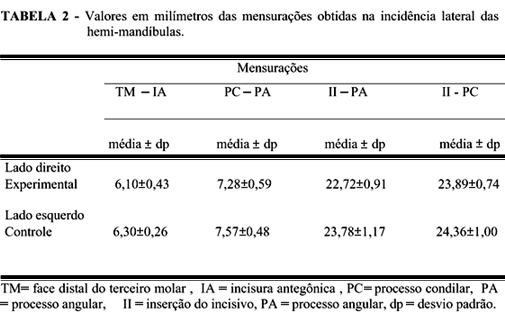PURPOSE: To analyse the consequences on the growth of maxilla and mandible of a surgical bone defect that simulates a mandibular ramus fracture. METHODS: A group of 25 one-month-old Wistar rats were used in this study. Under general anesthesia, and through a submandibular incision, a vertical osteotomy on the right side of the mandibular ramus was made using a surgical drill. The animals were sacrificed after two months, soft tissues removed, and the mandible disarticulated. The skull was submitted to axial radiograph and the hemimandibles to a lateral radiograph. With these, cephalometric mensurations were made through a computer system, and the obtained values submitted to Student's t-test. RESULTS: The height of the mandibular ramus presented significant difference (p=0,010) as well as the length of mandible, both to the condyle (P=0,015) and the angle (p=0,001). There was no significant difference to the mensurations of the maxilla. CONCLUSION: The consequences of the experimental surgical bone defect on the mandibular ramus in the growing period were the lessening of the mandibular height and length.
Mandible; Fracture mandibular; Maxillofacial development




